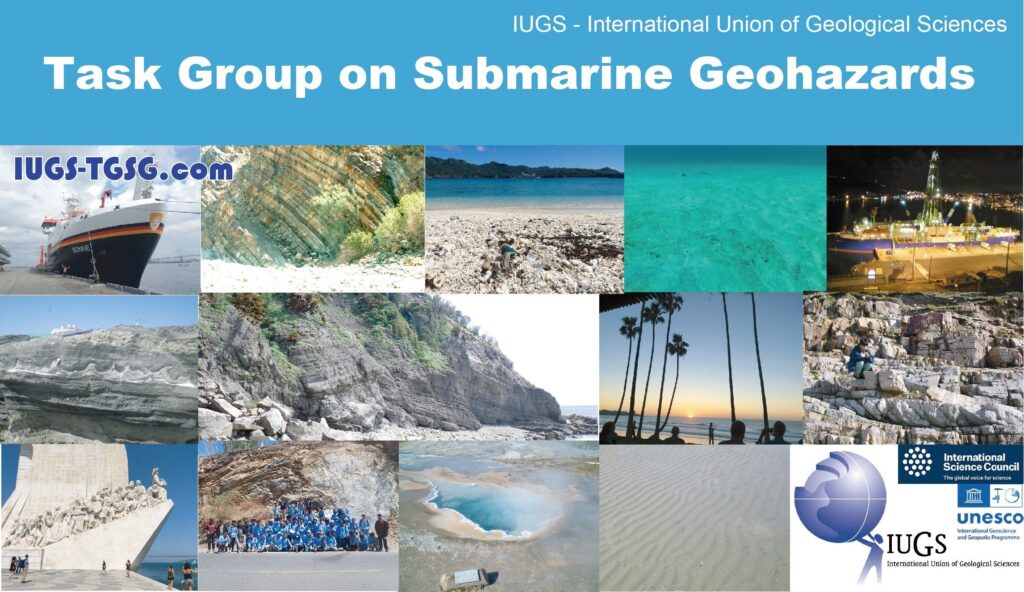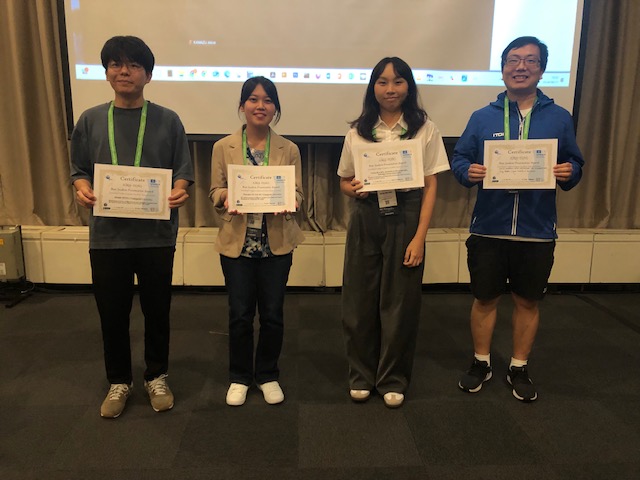
Open symposium of the Science Council of Japan
Submarine geohazards and offshore wind developments
Date and time: 10:00-18:00 on 14 November 2024
Place: Roppongi, Japan and online
Program
https://ds0n.cc.yamaguchi-u.ac.jp/~kawaken/TGSG/240924OpenSymposium2024a.pdf

2024 IUGS-TGSG Best Student Presentation Award Winners
Chien-Wei HSU, Institute of Oceanography, National Taiwan University
Possible development and implication of subsurface fault structures
offshore northeast Taiwan
Hisashi IKEDA, Graduate School of Science and Technology for Innovation,
Yamaguchi University
Depositional process of contourite on active margins: Examples from the
Kuril Trench and the Japan Trench in the NW Pacific
Momoko TSUTSUMI, Faculty of Science, Yamaguchi University
An optimal geological method to decipher active faults and related
lineaments at Yamaguchi, SW Japan
Qing WANG China University of Geosciences
How do overpressure-driven hydrofractures grow in sedimentary basins?
2024 Miyashiro Akiho Awards from the Geological Society of Japan
Gregory F. Moore
Dr. Gregory F. Moore, the University of Hawaii has made significant contributions to the understanding of the geological structures and tectonics of accretionary prisms worldwide, primarily through geological and geophysical approaches. His research encompasses diverse regions, including areas around Japan, Sumatra, the Molucca Sea, Taiwan, Oregon, Barbados, Costa Rica, and New Zealand, with a significant focus on the Nankai Trough region. Over one-third of his published work centers on this region. Notably, his significant research achievements include the joint Japan-US project to elucidate the structure of the Nankai accretionary prism through reflection seismic surveys and the analysis of core samples from IODP and other deep-sea drilling projects. Those works have vividly depicted the three-dimensional geological structure of the active accretionary prism for the first time, including the décollement and mega-splay faults. For example, off the Kii Peninsula, Dr. Moore’s research has detailed how the mega-splay fault within the Nankai accretionary prism extends continuously from the plate boundary fault beneath the accretionary prism to the seafloor, cutting through the low-angle faults in the frontal accretionary prism. This research has led to detailed discussions on the role of the mega-splay fault.
Additionally, off the coast of Shikoku, his research has vividly illustrated how trench-fill sediments on the hanging wall side of the décollement are thrust and folded by splay faults, forming the accretionary prism, while on the footwall side, hemipelagic sediments subduct along with the oceanic crust without deformation.
In studies on the geological structure and tectonics of convergent boundaries through detailed investigations of the geological structures
of the active accretionary prism around the Nankai Trough, Dr. Moore has exercised leadership through collaborative researches with many Japanese researchers. He has also contributed to the development of young researchers in Japan and played a crucial role in gaining global recognition for research on the current accretionary prism in Japan. The geological structures of the active accretionary prism elucidated by Moore and his collaborators have significantly influenced the study of onshore accretionary prisms, which are major elements of Japan’s geological framework.
In recognition of his internationally significant achievements and his outstanding contributions to the development of geology and the training of researchers, particularly in the Nankai Trough region, Dr. Moore is highly recommended for the Geological Society of Japan’s Akiho Miyashiro Prize. (From the website https://geosociety.jp/outline/content0252.html)